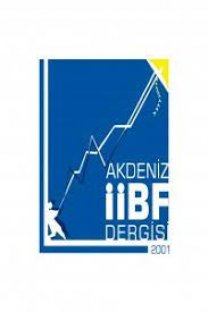Düzenleyici reformlara gerekçeler: Sayısal analizler
Bu çalışma ile uluslararası kuruluşlar tarafından gerçekleştirilen ve ülkeleri birbirleriyle kıyaslayan “OECD Ürün Piyasası Düzenleme Kriterleri”, “Dünya Ekonomik Özgürlük Endeksi”, “İş Yapma Kolaylığı Raporu” gibi çalışmaların düzenleyici reformlara nasıl altyapı oluşturduğu ortaya konulmaktadır. Uluslararası kuruluşlar tarafından kriter seti geliştirme ve endekslerin hesaplanması sonucu ülkelerin pozisyonları belirlenmektedir. Böylece ülkeler düzenleyici reformlar bağlamında daha rahat yönlendirilmektedir. Bu yönlendirmenin piyasayı temel alan bir düzlemde gerçekleşmesinden ötürü ortaya çıkan birçok problem ve tartışma alanyazında zaten yeterince vurgulanmıştır. Bu makalede yukarıda adı geçen ve uluslararası kuruluşlar tarafından gerçekleştirilen çalışmalar düzenleyici reformlara farklı bir açıdan bakabilmek adına detaylıca incelenmektedir.
Justifications for regulatory reforms: Quantitative analyses
This paper analyses how studies like “Indicators of OECD Product Market Regulation”, “Economic Freedom Index of the World” and “Doing Business Report”, which are carried out by international organizations and compare countries, form a basis for regulatory reforms. The standing of the countries is determined as a result of formation of criteria set and calculation of indices by international organizations. Thus, countries are guided more easily in the context of regulatory reforms. Many problems and discussions resulting from the fact that this guidance is based on the market system have already been stressed enough in the literature. In this article, the aforementioned studies of international organizations are examined in detail to evaluate the regulatory reforms from a different perspective.
___
- BAYRAMOĞLU, SONAY (2003), “Düzenleyici Devlet Düzenlenirken: OECD Türkiye Raporunun Eleştirel Bir Çözümlemesi”, Praksis, Sayı 9, s. 143-162.
- EMEK, UĞUR, “Türkiye’de Düzenleyici Devlete Dönüşüm Süreci” http://www.ekodialog.com/Makaleler/turkiyede_duzenleyici_devle t.html, (15.08.2012)
- CHANG, HA-JOON (2003), Kalkınma Reçetelerinin Gerçek Yüzü, çev. Tuba Akıncılar Onmuş, Wimbledon Publishing Company Ltd.
- GWARTNEY, JAMES, ROBERT LAWSON AND JOSHUA HALL (2012), Economic Freedom of the World 2012 Annual Report, Fraser Institute.
- OECD (2002), OECD Reviews of Regulatory Reform Turkey.
- OECD (2008), “Product Market Database”, http://www.oecd.org/document/36/0,3343,en_2649_34323_3579 0244_1_1_1_1,00.html, (20.08.2012a)
- OECD (2008), “Schemata for the Integrated PMR Indicators 2008”, http://www.oecd.org/dataoecd/32/9/42131723.pdf, (17.08.2012b)
- OECD (1997), “The OECD Report on Regulatory Reform: Synthesis”, Paris.
- THE WORLD BANK (2012), “Doing Business 2013:Smarter Regulations for Small and Medium-Size Enterprises”, http://www.doingbusiness.org/~/media/GIAWB/Doing%20Busi ness/Documents/Annual-Reports/English/DB13-full-report.pdf, (02.01.2013)
- THE WORLD BANK (2009), http://web.worldbank.org/WBSITE/EXTERNAL/COUNTRIES /ECAEXT/TURKEYINTURKISHEXTN/0,,contentMDK:21903 851~menuPK:455791~pagePK:2865066~piPK:2865079~theSiteP K:455688~isCURL:Y,00.html.
- WÖELFL, ANİTA ISABELLE WANNER, TOMASZ KOZLUK AND GİUSEPPE NİCOLETTİ (2009), “Ten Years of Product Market Reform in OECD Countries: Insights from a Revised PMR Indicator”, OECD Economics Department Working Papers, No. 695, OECD Publishing.
- ISSN: 1302-9975
- Yayın Aralığı: Yılda 2 Sayı
- Başlangıç: 2001
- Yayıncı: Akdeniz Üniversitesi
